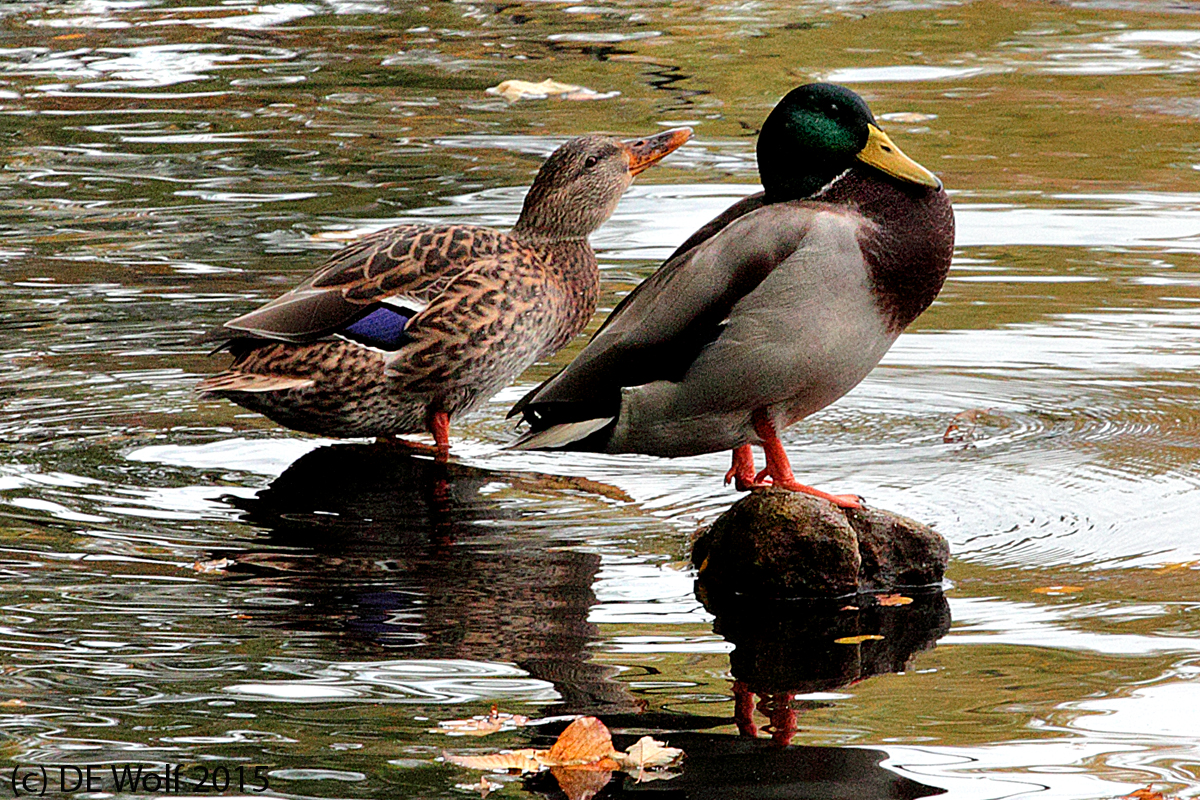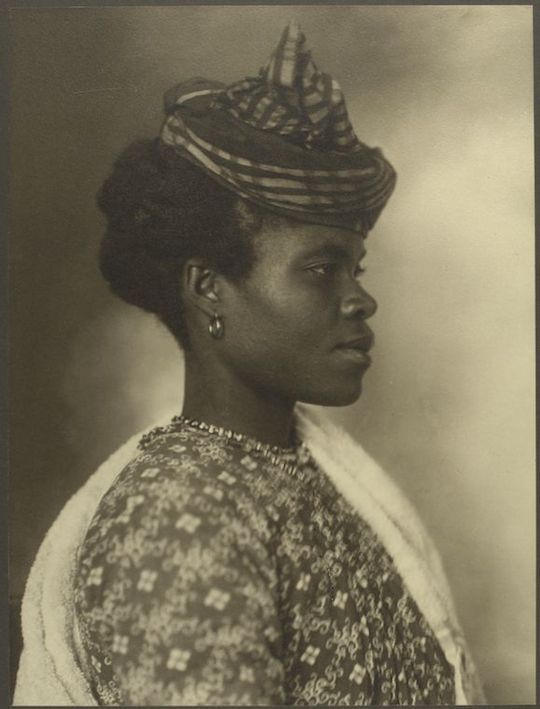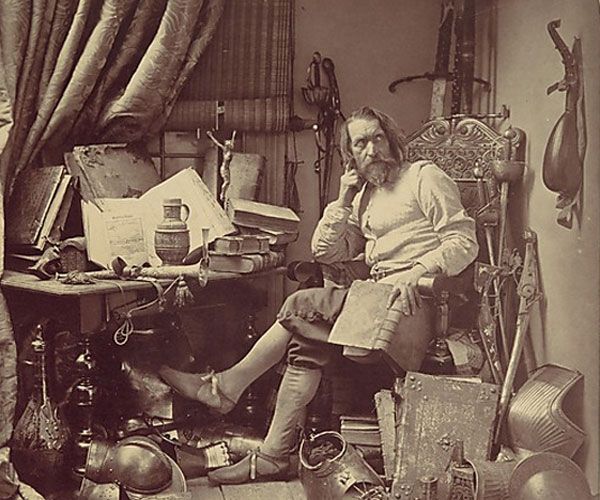
Figure 1 – Mallard pair, female and male, (Anas platyrhyncos) Fresh Pond Reservation, Cambridge, MA. (c) DE Wolf 2015;
The other day I came upon this pair of mallards in the Pond. The male was standing on a rock and periodically dunked his head in the water. The females was swimming nearby. I had stopped to chat with one of the dog walkers, when I noticed that they were now standing “lovingly” together. And I just had to take the image of Figure 1.
“Lovingly” together? I had to wonder. We all fall victim, well maybe that’s too strong. We all love the cute cuddly animal images that abound on the internet, and I cannot tell you how many times this passed summer I’ve seen fraught-filled ducks with their chicks down a storm drain and humans jumping to their aid. All very sweet and all reminiscent of Robert McCloskey’s “Make Way for Ducklings,” which did after-all take place in Boston.
So I started wondering whether ducks do mate for life, and whether the highly anthropomorphic vision of Mr. and Mrs. Mallard raising Jack, Kack, Lack, Mack, Nack, Ouack, Pack and Quack has any reality. As it turns out the story is complicated. And I am not sure that I have really sorted it all out, but in terms of the mating for life scenario that seems not so much. The drakes appear to wander off when the female’s attention falls from him to her brood. How’s that for anthropomorphic. Also the hens often pick new mates the following season. And then there’s the groups of drakes gang-raping hens. Perhaps anthropomorphic, but not happily so. We are left in the end with the point made by Dr. Alan Grant in Jurassic Park that animals do what they are programmed to do. They aren’t evil; they’re just coded.
There have been precious few duck or goose chicks on Fresh Pond this past summer. This I suspect is largely due to the wildlife management process of addling, where the eggs are rendered infertile by coating them with corn oil. This kills the eggs but the ducks don’t realize it and immediately produce a new set. So I guess that my image that my picture shows Mr. and Mrs. Mallard as empty-nesters looking out reflectively at the Pond as winter approaches (I can just see the pipe in Mr. Mallard mouth) is pure fantasy, still a lovely one.
Canon T2i with EF70-200mm f/4L USM lens at 200 mm, ISO 1600, Aperture Priority AE mode 1/800th sec at f/9.0 with no exposure compensation.






